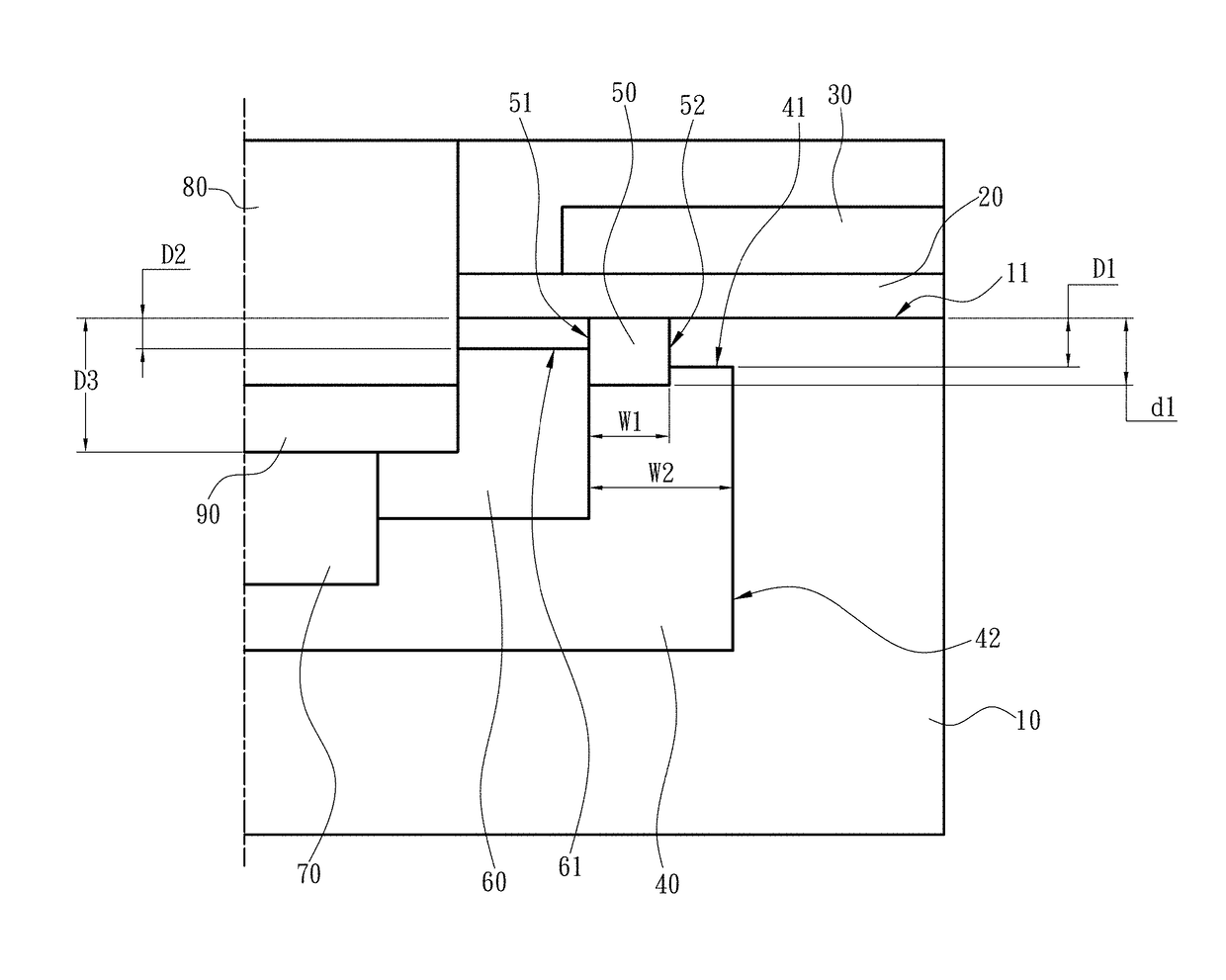Silicon carbide semiconductor element and manufacturing method thereof
a silicon carbide and semiconductor element technology, applied in the field of semiconductor elements, can solve the problems of uneven thickness of the gate oxide layer, high electric field crowded, sic damage, etc., and achieve the effect of reducing the turn-on resistance of mos-controlled elements and enhancing element reliability
- Summary
- Abstract
- Description
- Claims
- Application Information
AI Technical Summary
Benefits of technology
Problems solved by technology
Method used
Image
Examples
Embodiment Construction
[0036]Details and technical contents of the present invention are given with the accompanying drawings below.
[0037]FIG. 1 and FIG. 2 are a section view before a source electrode is formed and a section view after the source electrode is formed, respectively. As shown, a silicon carbide (SiC) semiconductor element provided by the present invention includes a semiconductor layer 10, a dielectric layer 20, a gate electrode layer 30, a first doped region 40, a shallow doped region 50, a second doped region 60 and a third doped region 70. The semiconductor layer 10 is of a first conductivity type and includes a surface 11. The dielectric layer 20 is on the surface 11 of the semiconductor layer 10. The gate electrode layer 30 is on the dielectric layer 20. In the embodiment, the first conductivity type is n type. In the present invention, the semiconductor layer 10 is made of 4H—SiC, and has a thickness between 1 μm and 35 μm and a doping concentration between 1×1014 cm−3 and 1×1017 cm−3....
PUM
 Login to View More
Login to View More Abstract
Description
Claims
Application Information
 Login to View More
Login to View More - R&D
- Intellectual Property
- Life Sciences
- Materials
- Tech Scout
- Unparalleled Data Quality
- Higher Quality Content
- 60% Fewer Hallucinations
Browse by: Latest US Patents, China's latest patents, Technical Efficacy Thesaurus, Application Domain, Technology Topic, Popular Technical Reports.
© 2025 PatSnap. All rights reserved.Legal|Privacy policy|Modern Slavery Act Transparency Statement|Sitemap|About US| Contact US: help@patsnap.com



